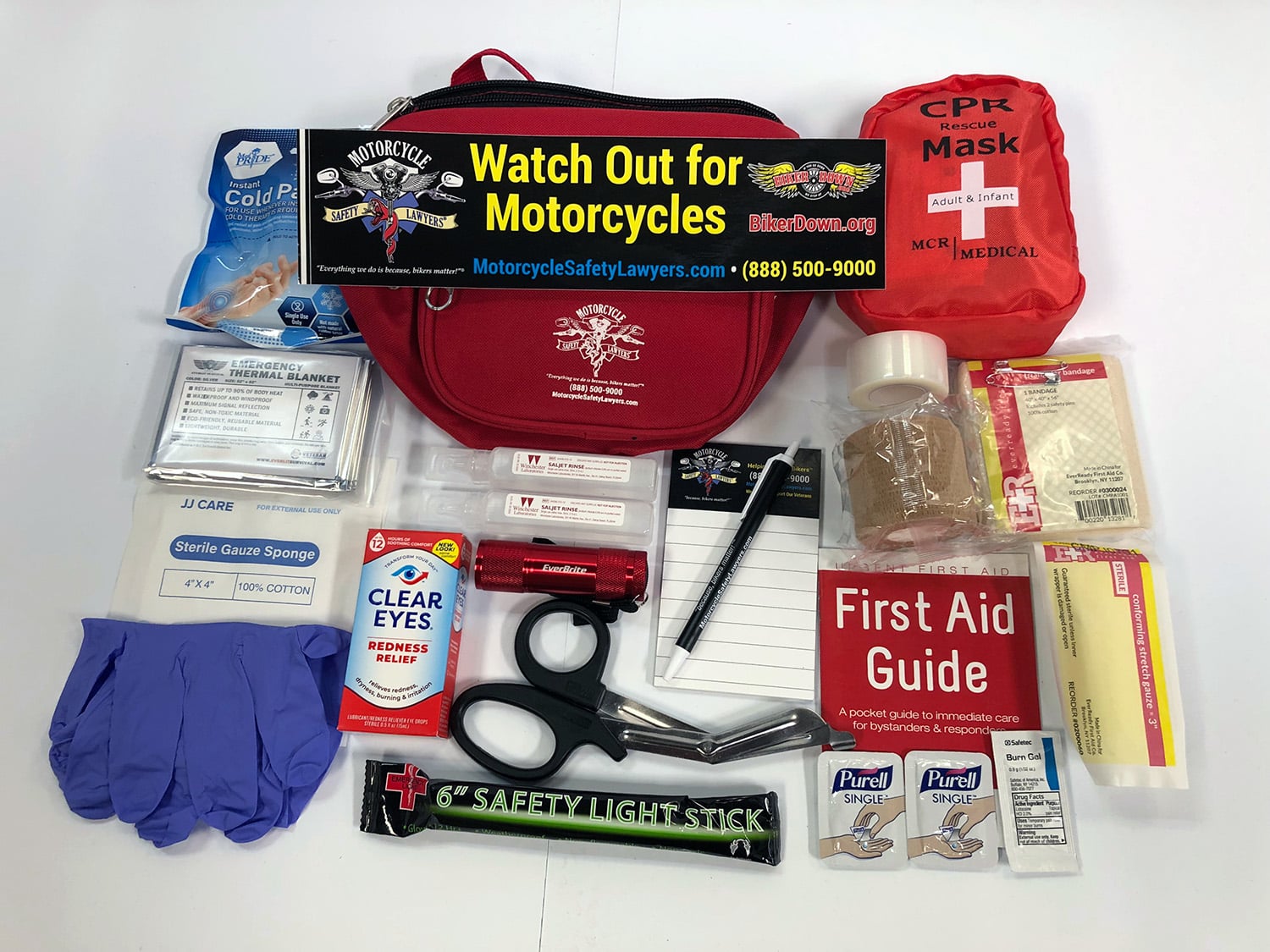Full Coverage Motorcycle Insurance or Liability Motorcycle Insurance | What’s the difference?
Last updated Monday, June 23rd, 2025

Full Coverage Motorcycle Insurance OR Liability Motorcycle Insurance? Know The Difference
As Chicago motorcycle accident lawyers, we know what full coverage motorcycle insurance, liability motorcycle insurance, gap insurance, and comprehensive insurance are, but do you know if you have the right one for you?
Motorcycle insurance coverage recommendations come in all shapes and sizes. To help answer some of the questions about insurance types, here is a breakdown of the different coverage classifications:
What is Liability Insurance for motorcycle owners:
Liability motorcycle insurance is the standard motorcycle insurance that motorcyclists should have in order to be adequately protected from the liabilities that they may face. Most of the states in the US require motorcycle owners to be holders of this classification of insurance.
Legally, in a state like Illinois, if you fail to purchase motorcycle liability coverage in your policy, and you continue to ride your motorcycle, you’re breaking the law. Liability insurance offers compensation in case you’re at fault for causing bodily injury or property damage after an accident.
Any legal fees involved as a result of the accident are also catered by the insurance company. It’s worth pointing out that the coverage only caters to liability claims and legal charges to the extent of your policy’s limit.
If the liabilities demand more compensation than your policy is able to pay, you’ll have to pay the extra costs from your personal finances.
Consequently, liability insurance is vital since it allows you to have peace of mind. This is because you have coverage for any injuries or damages when you’re at fault in a motorcycle accident.
What is Comprehensive Motorcycle Insurance?
Comprehensive insurance is the highest level of insurance classification that you can have for your motorcycle. With this insurance classification, you’re able to insure yourself and your bike in the event of an accident. This is full coverage motorcycle insurance.
Even if you were the one at fault in an accident, this coverage pays for any damages to your bike. In case there’s a need for a replacement, the coverage will also pay for it.
Moreover, comprehensive insurance covers incidences like fire, vandalism, theft, or natural occurrences that might warrant the replacement or repair of your motorcycle.
If for instance, your bike is stolen or has damage from a natural phenomenon like a storm, your insurance company should compensate you accordingly. Especially, if you have comprehensive insurance coverage.
Therefore, you should consider having this classification of insurance if you want to have a broader insurance plan. Fundamentally, you’ll be able to protect both you and your motorbike. However, this is not the case if you just have liability insurance.
Collision Insurance
Basically, collision insurance pays for the repair or replacement of your bike after being involved in an accident with a car, motorcycle, or any other object. Any damage to your motorcycle gets compensated through this insurance policy.
Therefore, if your bike hits a stationary object like a tree or a fence, your collision insurance cover should compensate you for any repairs or replacements needed.
However, it is important to note that there are situations where collision insurance does not cover you including:
(1) any damage to your motorcycle that does not have a relation to riding. For example, in cases of theft or vandalism
(2) damage to another person’s motorcycle or vehicle
(3) medical expenses
What is Gap Insurance? Can you get Motorcycle Gap Insurance?
Motorcycle gap insurance pays for the gap between what you owe on your motorcycle and what it is worth if it is stolen or totaled in an accident. Gap insurance is the only way to make sure you don’t end up in debt for your motorcycle if it is stolen or wrecked before its value balances out to what an insurer would pay to repair or replace it.
Every new vehicle starts to depreciate when it leaves the lot, so if you have a loan or payments – don’t overlook this coverage.
Personal Accident Coverage
Personal accident coverage is another classification of motorcycle insurance that you should have a good understanding of. This coverage involves an extra cost. It covers injuries that you, and the passengers you carry, sustain in the unfortunate event of an accident.
The policy covers the medical expenses to treat the injuries that you and the passengers incurred during the accident.
Another significant feature of personal accident coverage is that it compensates your family in case you’re in a fatal accident. Even if you were the one at fault in the accident, your family will still be compensated accordingly.
However, you should take note that there are a few situations that you cannot be compensated for through this coverage. Some of these situations include:
(1) if you willingly put yourself at risk
(2) if the injuries you sustain are self-inflicted
(3) if you sustain injuries when under the influence of drugs or alcohol
Uninsured/Underinsured Coverage
The uninsured/ under-insured motorist coverage classification covers compensation when the other party at fault in an accident is either uninsured or underinsured.
Therefore, if the party at fault does not have enough insurance, the insurance policy takes care of the difference. In the same vein, if the one at fault does not have any insurance, this policy will cover the compensation required.
Thus, this insurance classification ensures that irrespective of the insurance status of the at-fault party, you’re able to receive compensation for the damages you incur in an accident.
Understanding How Full Coverage Motorcycle Insurance Works
Virtually every state in the US requires motorcycle owners to have insurance to ride legally. The exceptions to this are Florida and Washington. But, just because you aren’t required to have motorcycle insurance doesn’t mean you should avoid buying a policy. In the event of an accident, in addition to the severe injuries you risk, you may also be liable for property damage and for medical bills for the other driver. That’s why you need motorcycle insurance, the only question being, do you need standard or full coverage motorcycle insurance?
One thing that most states have in common is that riders have to have liability coverage if they want to ride a motorcycle. While liability is the minimum, there are other types of insurance. These provide more protection with the caveat that they cost a little more money.
For example, if you decide that you want more coverage, you can add comprehensive and collision coverage to your policy. Basically, this approach gives you the equivalent of full coverage insurance but, at a lower price point.
With a higher level of coverage such as this, you’ll have more financial protection in the event of an accident. Limiting your liability should be your main goal here. This is because the damages that could be levied against you from a single accident can easily end up in the range of well over ten thousand dollars.
Here’s a quick rundown of what is included in full coverage insurance and how these features protect you.
How Collision And Comprehensive Motorcycle Insurance Coverage Works
Full coverage motorcycle insurance includes collision and comprehensive coverage. These are first-party type covers that compensate you for the repairs or replacement of your motorcycle in the event of an accident.
What collision coverage does is pay for the replacement or repair of your motorcycle if you’re hit by another car or if you hit an object. This coverage is there to protect you for times when the at-fault driver either lacks insurance or has insufficient coverage. This type of insurance also protects you in the event of a hit-and-run accident.
What does comprehensive insurance cover? It covers the repair or replacement of your motorcycle if something happens to it that is not the result of an accident. For example, if someone vandalizes your bike or steals it, comprehensive insurance would provide you with the cover you need.
Comprehensive insurance will also provide you with coverage in the event of fire damage, hail damage, or any other type of accidental damage not related to a street accident.
One important thing to keep in mind is that if you need to file a claim to repair your bike, collision and comprehensive coverage will only pay for the cost of factory or standard motorcycle parts. Simply put, if you have additional parts added to your bike, you won’t be covered. This is unless you have an insurance policy that specifically covers these items.
How Bodily Injury And Property Damage Liability Protect You
One of the major components of full coverage motorcycle insurance is bodily injury and property damage cover. These types of coverage will protect you if you’re at fault in an accident. Especially if it results in the injury of another person or damage to someone else’s property.
Why is this type of coverage so important? Let’s say that you’re at fault in an accident and the other driver is injured. If this happens, this type of coverage would pay for their injuries. This policy will also pay for damages to property. With bodily injury and property damage coverage, you don’t have to worry about being financially liable if you’re at fault in an accident.
Except for Florida and Washington, bodily injury and property damage liability coverage is mandated by state law. While it may not be mandatory to have this type of coverage in these two states, riders in these states should still obtain it.
Did you know that if you’re the at-fault party in an accident your assets could be at risk? With liability coverage, you don’t have to worry about someone filing a lawsuit that can cost you money or assets. In an accident where you lack proper insurance coverage, things can get very expensive very quickly for you. This is why a full coverage policy is the best option for you.
How Uninsured Or Under-Insured Coverage Protects You
Having full coverage insurance also protects you if you’re in an accident with an uninsured or under-insured driver. When you have this coverage you have protection from losses when the other driver lacks sufficient insurance to pay for your damages.
What is especially useful about this coverage is that it covers both bodily injury as well as property damage. It works in the same manner as liability insurance. So, if you suffer injuries in an accident and your motorcycle has damage as well, this coverage will pay for both.
But, this policy only applies if the motorist who struck you is not able to pay for your medical bills and damages. It’s important to point out that in some states, this type of coverage is mandatory.
Some of the states that require this coverage are Minnesota and New York. Whether or not you have to obtain full coverage protection, it’s still a good idea to have it. This way you can protect yourself from drivers that lack sufficient insurance.
How Personal Injury Protection Protects You
What is personal injury protection? It refers to the protection that covers your medical expenses following an accident. On top of that, this insurance also covers any lost wages resulting from your accident.
It’s important to note here that personal injury protection pays for your expenses. This is regardless of who was at fault in your accident. The difference between it and liability insurance is that with liability insurance, the company will not pay out a claim unless someone is at fault in the accident.
So, if you have no-fault coverage, you can get your medical bills paid more quickly than if you simply had liability insurance. This is a big perk and it’s a big reason why having this type of cover is beneficial to riders. Because of the benefits you receive and the additional protection, all riders should strongly consider getting this coverage.



